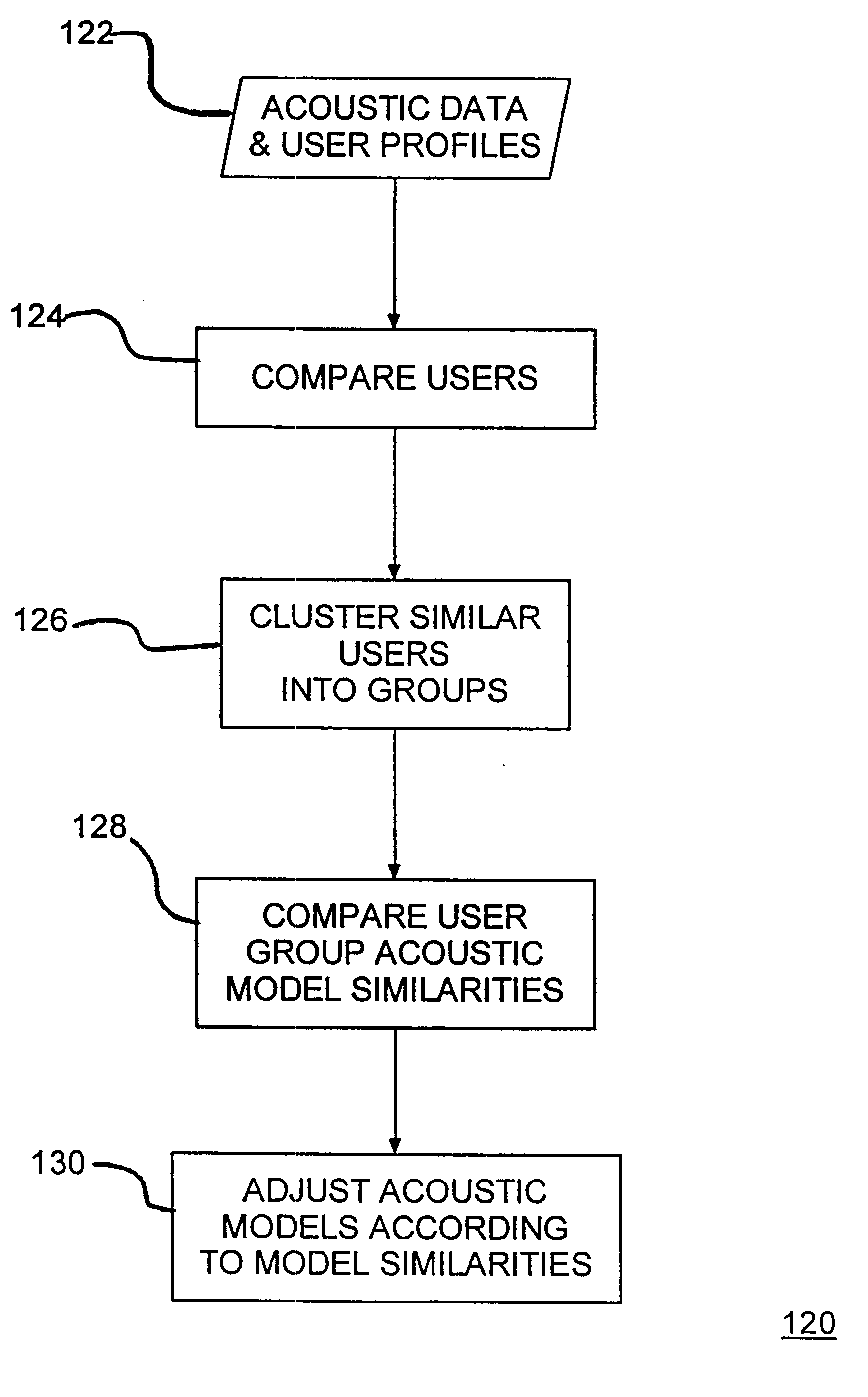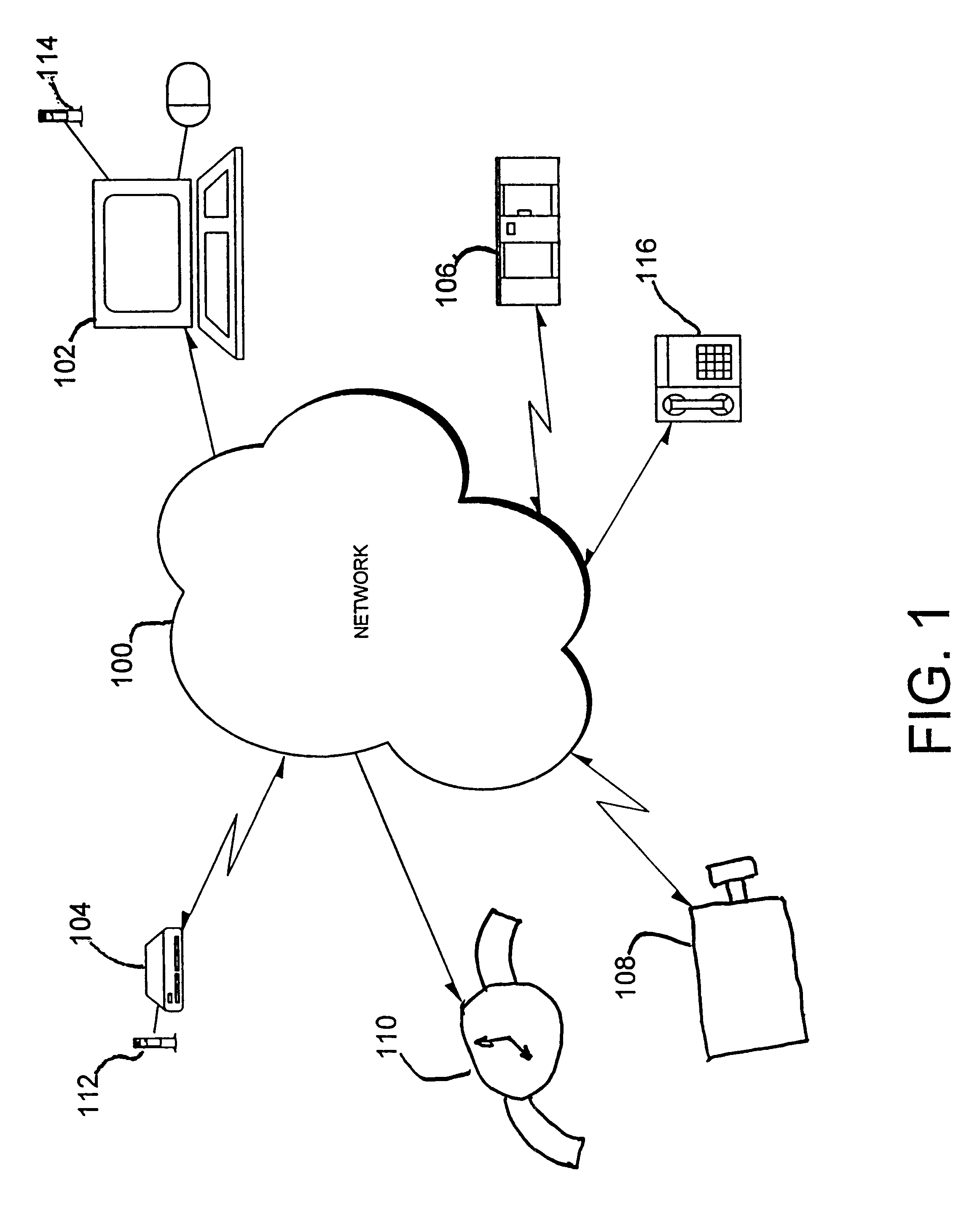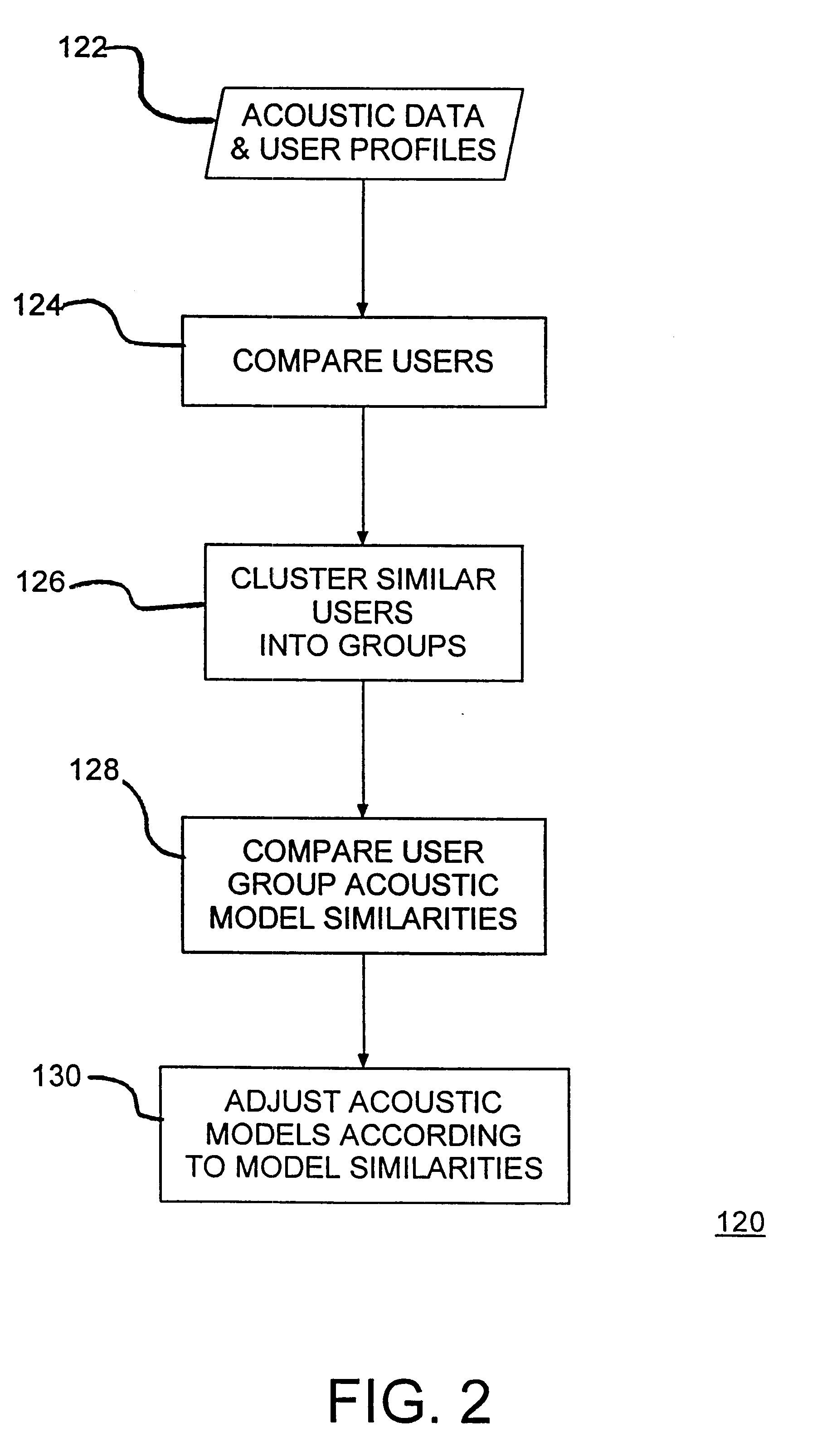Speaker model adaptation via network of similar users
a network of similar users and a speaker model technology, applied in the field of speech recognition, can solve the problems of inability to handle additional training time and increased data volume during training, inability to recognize errors, and inability to adapt to the needs of similar users,
- Summary
- Abstract
- Description
- Claims
- Application Information
AI Technical Summary
Problems solved by technology
Method used
Image
Examples
Embodiment Construction
Referring now to the drawings and, more particularly, FIG. 1 shows a speech recognition network 100, wherein individual user utterances are analyzed to classify the user, the individual user is clustered with other similar users, and data from similar acoustic models for those clustered users are aggregated to provide an expanded or supplemented acoustic model for recognition of that individual user. Computers 102, 104 and 106 connected to the network 100 are each capable of executing an acoustic model (AM) for some type of speech recognition. Also, speech enabled interface devices 108, 110 with embedded processors or smart controllers may be connected to the network 100. In the preferred embodiment networked system, utterances or speech input may be, for example, for command / menu navigation, dictation or transcription.
Preferably, the speech recognition network 100 is a local area network (LAN) of connected speech recognition computers 102, 104, 106 and speech enabled devices 108, 1...
PUM
 Login to View More
Login to View More Abstract
Description
Claims
Application Information
 Login to View More
Login to View More - R&D
- Intellectual Property
- Life Sciences
- Materials
- Tech Scout
- Unparalleled Data Quality
- Higher Quality Content
- 60% Fewer Hallucinations
Browse by: Latest US Patents, China's latest patents, Technical Efficacy Thesaurus, Application Domain, Technology Topic, Popular Technical Reports.
© 2025 PatSnap. All rights reserved.Legal|Privacy policy|Modern Slavery Act Transparency Statement|Sitemap|About US| Contact US: help@patsnap.com



